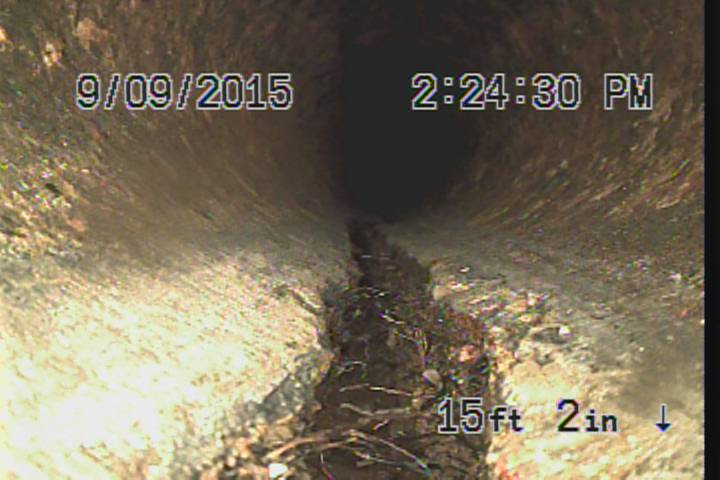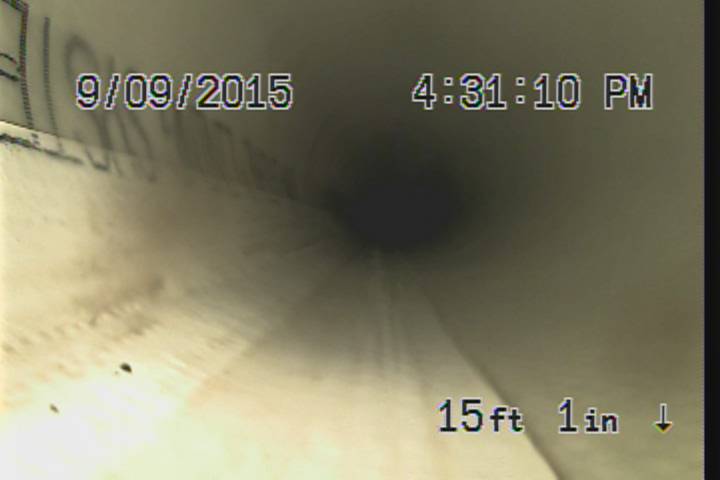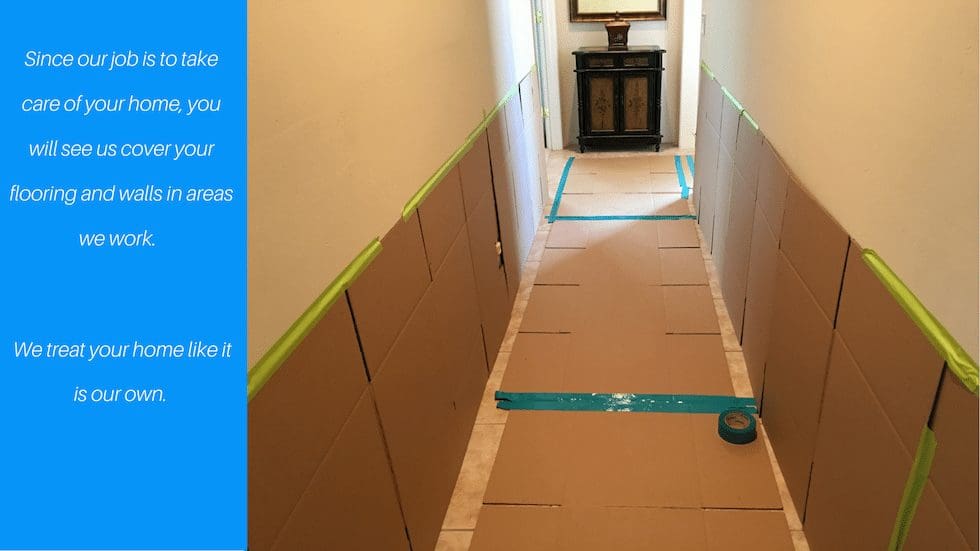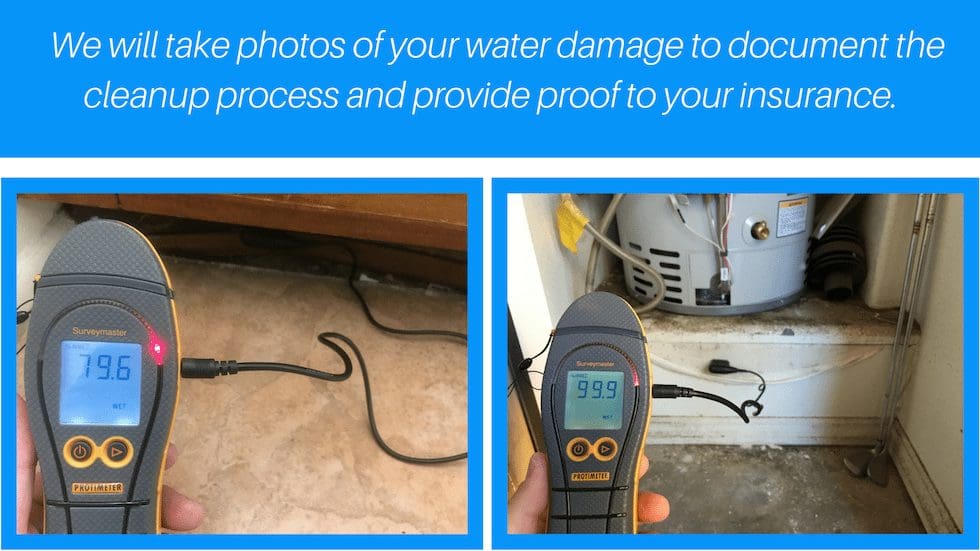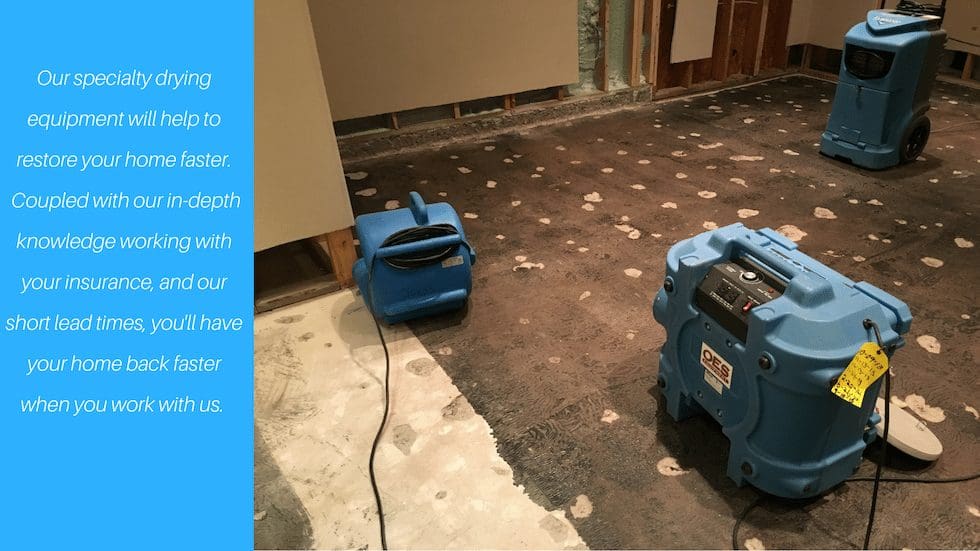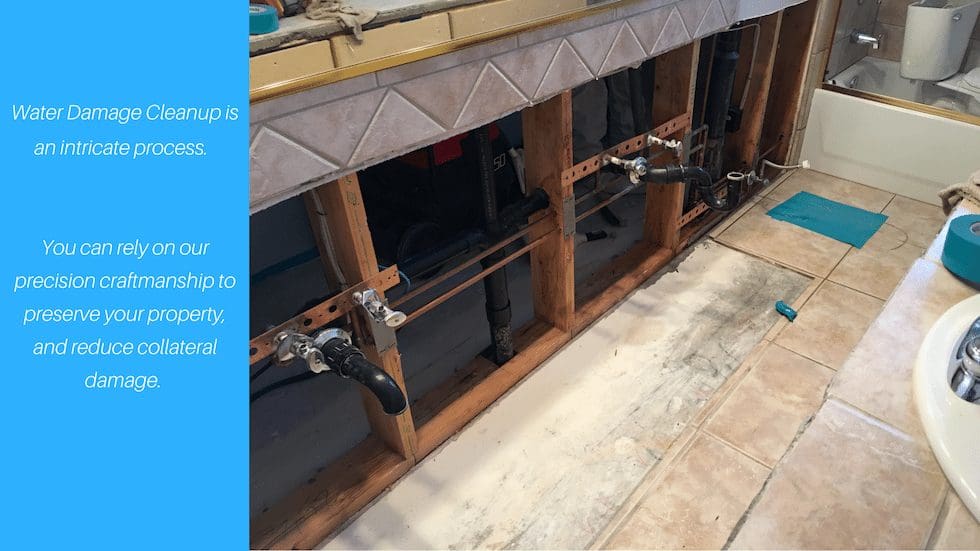The Large Pros and Small Cons of Using Trenchless Sewer Repair
Sewer drains are a very common issue that all plumbers have to deal with. From installing all new drains from the ground up, to clearing your drains using a cable method to a powerful hydro jetter, to trenching and repairing sewer lines taking care of sewer drains have been a huge part of our business.
The sewer and drain replacement technology has changed dramatically over the last 10 years, with the advent of trenchless sewer line rehabilitation and replacement. We are proud to say we have certifications in all methods of trenchless sewer pipe replacement and have installed over 10,000 feet of sewer line. We want to share with you our trenchless knowledge to help you make the right choice on what is the right fit for you and your sewer line.
Let’s first discuss the different options you have when it comes to trenchless pipe repair.
One process is pipeling. Other terms for this method are epoxy lining, or cured in place lining. This is where a ballon is inserted inside the old pipe with a two-part mixed-epoxy resin, applied and cured in place. Once the curing is completed, which typically takes 2 to 6 hours depending on temperature, the ballon is removed, and essentially you have a new pipe within the old pipe. Most of the time one hole will be have to be created to install.
The other process is pipe bursting. This is a method in which two holes will need to be created to access the pipe that is being replaced from one end to the other. This is done by pulling a new poly pipe and crushing the old pipe using a very strong hydraulic machinery and cable.
The BIG Advantages of Trenchless Sewer Replacement
There are many great advantages of replacing sewer lines using the trenchless methods. Using pipelining or pipe bursting, we have saved people’s lines, landscaping, driveways, very expensive flooring, prevented massive street work and, most of all, saved our customer’s money.
Other BIG advantages include a 50 year life expectancy, pipes that are resistant to corrosion, a seamless pipe that prevents any root intrusion, and smooth inside surface making for a free-flowing drain system.
Trenchless also has advantages beyond sewer and drains. We have successfully used trenchless equipment on gasoline and water line replacement.
Some Small Disadvantages of Trenchless Technology
There are times when it’s too late to rehabilitate a pipe using the trenchless method. The line can be so broken that the only option is to manually trench and replace the pipes underground. When this occurs trenchless technology is not a fit.
If trenchless is not performed properly, there can be some major issues. As always, it’s important to hire the right trenchless sewer company. We have had to perform clean-up work for other trenchless sewer jobs from other companies. This would happen because either the epoxy was not cured long enough or fittings were pipe-burst right through, blocking drain flow from the other system of the property.
In addition to these limitations, the cost can be a bit more sometimes depending on the application. And please bear in mind that not all local codes and cities approve trenchless technology.
When and Where Can the Trenchless Method be Best Used?
We always recommend using the trenchless method in places where the line is very deep, when the lines are very long, or when the material or landscaping is very expensive to replace.
Other places to use trenchless technology is out in the street. In cities like Los Angeles, homeowners have responsibility out to the middle of the city sewer in the street. Street sewer contractors can be very expensive to dig the street. Performing traffic control and city public work requirements can be overwhelming. In this case, trenchless technology can help you avoid a lot of headaches.
How to Choose a Trenchless Sewer and Drain Expert
First, ask a friend or neighbor if they had their lines done. If so, get the contact information from them. It’s important to ask any potential contractors these questions.
How many years have they been in business? We suggest at least 5 years.
Was the company clean during the work? Just because its trenchless, doesn’t mean that it can’t be sometimes messy. A good company will use drop cloths, containments, air scrubbers, and vacuums, to protect outside landscaping and inside flooring.
Do they own their own equipment? It is very important that the company has their own equipment, as it is a good indication that they have invested a good amount of money in training.
What products do they use and how long are their warranties? This is important because if the company fails to respond later on to cover their warranty, then you can contact the manufacturer. They should cover it.
Well, we hope this informed you on trenchless sewer and drain technology. It is our passion here at Plumber of Tucson to educate our customers about everything in plumbing. We love to give twice the service with twice the care.
Researching a trenchless option for a potential sewer replacement? As the number one resource on trenchless sewer repairs, get your insight here…
When a sewer issue arises, it does not give any warning signs first. The unexpected cost and high price entice most people to look for different options. Thankfully, alternative methods are available.
Trenchless Sewer Replacement techniques come in
two forms.
Trenchless Pipe Lining
Commonly referred to as cured in place pipe, or just simply CIPP.
This process of pipe lining involves using the existing pipe as a “host pipe.”
For pipe lining to successfully work, it is imperative the host pipe be free of mechanical defects, flat spots (bellies), roots, and scale. If you have a cast iron pipe, a “descaling” is necessary before a liner can be installed.
If your pipe has suffered material loss, CIPP can fix it. Commonly, the bottom of cast iron pipe wears away after many years. This erosion effect leaves a channel in the drain, which catches debris and allows subsequent backups. If your pipe has extensive material loss, don’t fret, CIPP can most likely repair it.
- Before Pipe Lining
- After Pipe Lining
5 Advantages of Pipe Lining:
- You only need one access hole into the existing sewer
- More cost effective than trenching through your home
- 50-year warranty
- Non-invasive
- Most projects are completed in one day
5 Disadvantages of Pipe Lining:
- Doesn’t work if your pipe is collapsed
- The liner is not designed to make multiple bends
- Material cost is high- Might not always be the cheapest option
- Limited use in smaller diameter piping
- Not many contractors offer pipe lining service in town
Trenchless Pipe Bursting
Pipe Bursting is a technique in which a sewer is replaced by accessing each end of the drain. Hydraulic equipment is used to pull a bursting head (a tool which breaks open existing pipe) through the old pipe while pulling new pipe into place.
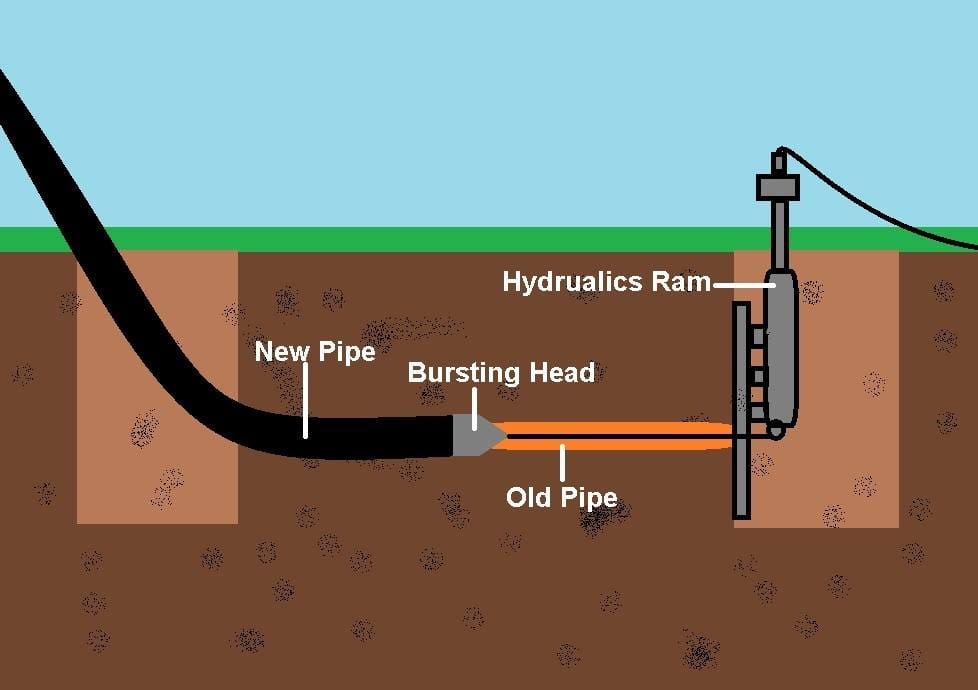
Pipe bursting is more commonly used when replacing your sewer line located outside of the property, whereas pipe lining is used more often on the inside (under the slab) of the property.
5 Advantages of Pipe Bursting
- In most cases, it is cheaper than trenching through your yard
- The pipe used to replace the sewer is HDPE. Resiliency and durability with HDPE is second to none.
- 50-year warranty
- If your existing pipe is three-inch in diameter, the new pipe pulled into place can be increased to four-inch.
- Preserves your yard from an irreversible scar that trenching leaves behind.
5 Disadvantages of Pipe Bursting
- Needing two holes to perform the sewer replacement can be a pitfall if the second hole is located somewhere in the house or the city street.
- The bursting head has limitations when making turns or bends
- If the existing pipe has a collapse, this technique does not work
- Pipe bursting cannot fix sags or bellies in the drain. In other words, if your current sewer line has an incorrect slope, pipe bursting is unable to correct the grade.
- Not useful in sewer pipes that are shorter than 15 feet.
Frequently asked questions regarding trenchless sewer replacements.
Which method of trenchless is best?
There isn’t one technique better or worse than the other. The right trenchless method for your property is usually determined after a professional can make an onsite evaluation.
Can this technology be used in different materials?
Yes. Trenchless methods can be employed in PVC, concrete pipes, ABS, clay piping, cast iron, and plastic.
What are the costs associated with trenchless sewer repairs?
Typical price ranges for most properties will range from $3500 to $8500. There are a few different factors that need to be evaluated before exact pricing can be determined. This article provides a more in-depth look into pricing.
How long does a trenchless replacement last?
These techniques are designed to last 50 to 100 years. At Plumber of Tucson, we provide a 50-year guarantee on all trenchless sewer replacements.
What should I look for in a company that provides this technology?
When you select your contractor, vet them for these characteristics.
- Certifications– Are they certified to provide a trenchless replacement?
- Insurance– Don’t ask them if they are insured, have them show you proof.
3.References– The key to accepting references is to actually call a few. Don’t be shy. These references may give insight to what it’s like working with this contractor.
- BBB rating- These listings come with a grade A through F.
If you see a “D” rating, steer clear.
[vc_row type=”vc_default” bg_type=”image” parallax_style=”vcpb-default” bg_image_new=”id^234|url^https://plumberoftucson.com/wp-content/uploads/2017/03/tucson-plumber-1.jpg|caption^null|alt^null|title^tucson-plumber|description^null” bg_image_repeat=”no-repeat” bg_override=”ex-full” el_class=”hero-row mobile-hide”][vc_column width=”7/12″][vc_empty_space height=”80px” el_class=”mob-reduce-top”][ultimate_heading main_heading=”Tucson Mold Remediation, Inspection, and Removal.” main_heading_color=”#ffffff” heading_tag=”h1″ sub_heading_color=”#ffffff” alignment=”left” main_heading_font_size=”desktop:38px;” main_heading_line_height=”desktop:48px;” main_heading_style=”font-style:italic;,font-weight:bold;” main_heading_margin=”margin-bottom:10px;” sub_heading_margin=”margin-bottom:40px;” sub_heading_font_size=”desktop:20px;” sub_heading_line_height=”desktop:28px;”]We specialize in Plumbing, Water Damage & Mold, Leak detection & Slab Leaks, and Sewer & Drain replacements in Tucson, Arizona.[/ultimate_heading][vc_row_inner][vc_column_inner width=”1/2″][vc_btn title=”Call Today: 520-900-9010″ style=”flat” color=”warning” size=”lg” align=”center” i_icon_fontawesome=”fa fa-volume-control-phone” button_block=”true” add_icon=”true” link=”url:tel%3A520-900-9010|||”][vc_empty_space height=”80px” el_class=”mobile-hide”][/vc_column_inner][vc_column_inner width=”1/2″][vc_btn title=”Request Service” style=”outline” color=”white” size=”lg” align=”center” i_icon_fontawesome=”fa fa-check-square-o” button_block=”true” add_icon=”true” link=”url:https%3A%2F%2Fplumberoftucson.com%2Fcontact-us%2F|||”][/vc_column_inner][/vc_row_inner][/vc_column][vc_column width=”5/12″][vc_empty_space height=”40px” el_class=”mobile-hide”][vc_single_image image=”248″ img_size=”full” alignment=”right” css=”.vc_custom_1510335822955{margin-bottom: 0px !important;}” el_class=”mobile-hide”][/vc_column][/vc_row][vc_row][vc_column width=”1/6″][/vc_column][vc_column width=”2/3″][vc_column_text]
Why Do More People Choose Plumber of Tucson Services?
–Trusted and preferred by insurance companies in AZ.
–We Follow Procedural Standards– You’ll know you’re working with an expert
–Rapid Response– Providing Expert Water Damage and Mold Cleanup
–Certified & Licensed– Qualified to handle any project
–Insured and Bonded– Providing you with 3rd party protection.
–We have your best interest at heart– Taking care of you and your home.
Mold Inspector in Tucson, AZ
If you believe you have mold growth in your home but can’t see it, a mold inspection is the first step in confirming your suspicion.
You do not need a mold inspection if you can visibly see fungi growth in your home. When you see fungal growth, that means you’ll need Mold Remediation and Restoration, which is different from testing or inspecting. Remediation and restoration is the process of mold cleaning & mold removal.
If you are looking for a free mold inspection in Tucson, we do provide a complimentary visit to your property. However, an inspection will typically require the use of tools and specialized equipment to pinpoint and uncover hidden or concealed mold.
With mold, it’s not about what you see, it’s about what you don’t see. Microbial growth thrives in dark, damp areas. When a wall gets wet, it can create a perfect environment for molds to grow inside the pockets of the wall.
What does a Mold Inspection in Tucson cost?
That depends on which inspection you need. There are two types of mold inspections.
- A visible inspection– which consists of a mold inspector arriving to your property and visibly looking for signs of mold growth.
- Mold inspection & testing – Which consists of an inspector not only visibly searching for signs of growth, but also using specialized equipment to find concealed mold.
Mold inspections will range from $49.00 to $219.00 for the average mold inspection.
The most thorough way to inspect for fungi growth in your home is to have mold testing completed which may incur some extra costs.
What does Mold Testing cost?
There are many mold testing companies in Tucson, and most of them charge between $450.00 to $700.00 depending on the scope of your request.
Does homeowners insurance cover Mold Cleanup?
It depends on your insurance policy. Most policies exclude mold cleanup coverages. However, some policies do include coverages up to a certain amount. Check your policy or call your insurance agent or broker for confirmation.
What does Mold Remediation/Restoration Cost?
Mold removal costs in Tucson are typically provided after you have had a professional evaluate the extent of water damage and growth. The average mold cleanup in Tucson is $1500 to $3,000 depending on the scope of work necessary.
What are the Arizona landlord tenant laws regarding mold?
This question is best answered by visiting the Arizona Department of Housing website.
You can download the AZ Residential Landlord and Tenant Act on their website.
Are there any Arizona mold remediation laws?
There are very few mold remediation regulations in AZ. Currently, the AZ Registrar of Contractors (ROC) doesn’t govern mold cleanup. However, any reconstruction or rebuilding that is associated with mold remediation projects, is governed by the Arizona Registrar of Contractors, when the rebuilding costs exceed $1,000.00.
Certified mold remediators will follow a procedural standard set by the ANSI/IICRC S520 Standard and IICRC R520 Reference Guide for Professional Mold Remediation
If you would like more information regarding mold regulations or requirements, you can visit these sites here:
AZ Department of Environmental Quality
Arizona Department of Health Services
EPA’s Information regarding Mold
Institute of Inspection Cleaning and Restoration (IICRC)
There are 5 major principles of mold remediation:
- Safety & Health Precautions taken before work starts using a combination of practices and controls.
- Control of mold before it spreads further– Containing work areas is important so mold spores do not spread into clean, unaffected areas.
- Overseeing the proper physical removal of the mold– Mold must be physically removed. Even in a dead state, mold is still an allergenic and an irritant. Bleach is not adequate for killing mold.
- Ensure moisture is controlled limiting future contamination
- Post-Cleanup Assessment by an independent environmental expert– to ensure the work is done properly.
These principles were created by the IICRC and can be viewed here: http://www.iicrc.org/consumers/care/mold-remediation/[/vc_column_text][/vc_column][vc_column width=”1/6″][/vc_column][/vc_row][vc_row type=”vc_default” bg_type=”image” parallax_style=”vcpb-default” bg_image_new=”id^272|url^https://plumberoftucson.com/wp-content/uploads/2017/03/bg3.jpg|caption^null|alt^null|title^bg3|description^null” bg_image_repeat=”no-repeat” bg_override=”ex-full” css=”.vc_custom_1523033613925{padding-top: 30px !important;padding-bottom: 50px !important;}” el_class=”cta-section”][vc_column][ultimate_heading main_heading=”Need an estimate for Mold Remediation or Cleanup?
We can help – 520-900-9010″ main_heading_color=”#ffffff” heading_tag=”h3″ sub_heading_color=”#ffffff” main_heading_font_size=”desktop:32px;” sub_heading_font_size=”desktop:20px;” main_heading_margin=”margin-bottom:15px;” sub_heading_margin=”margin-bottom:40px;” main_heading_style=”font-weight:bold;” margin_design_tab_text=””][/ultimate_heading][vc_row_inner][vc_column_inner width=”1/3″][/vc_column_inner][vc_column_inner width=”1/3″][vc_btn title=”Call Today: 520-900-9010″ style=”flat” color=”warning” size=”lg” align=”center” i_icon_fontawesome=”fa fa-volume-control-phone” button_block=”true” add_icon=”true” link=”url:tel%3A520-900-9010|||”][/vc_column_inner][vc_column_inner width=”1/3″][/vc_column_inner][/vc_row_inner][/vc_column][/vc_row][vc_row][vc_column width=”1/6″][/vc_column][vc_column width=”2/3″][vc_column_text]
Can you remediate mold yourself?
Yes, you can. However, without a deep understanding of how to cleanup mold growth, it’s probably best to leave cleanup and remediation to the professionals.
If you are confident you can manage the cleanup process and want to try DIY Mold Remediation, here are some things to ascertain first…
What causes mold to grow?
Mold is a natural part of our environment. Spores are in the air all the time, and when certain conditions are met—water, oxygen, and a food source—these spores will grow and turn into visible mold.
What does mold look like?
Most mold growth you see in your home will be black, white, or green in color. However, the color of mold is usually influenced by the type and nutrient source. Mold can also be pink, purple, orange, or brown. Mold will also look fuzzy. This fuzzy appearance can sometimes be difficult to identify.
What should you do if you find mold?
Hiring a professional is recommended. If you insist on removing the mold yourself, here are some helpful guidelines below.
Caution: Removing and preventing mold is only effective after the moisture issue is solved. Some microbial growths are considered toxic mold. These types of molds can be harmful if ingested. If you have respiratory issues or have immune compromisations, you should not be around mold and should seek advice from a professional.
A Remediators Guide to DIY Mold Remediation & Cleanup
- Purchase a mold testing kit
Mold testing kits can be purchased at most hardware stores. After obtaining, read the instructions to determine proper use. A mold testing kit is a great way to gauge whether what you see is in fact mold.
- Use PPE (Personal Protective Equipment)
A full body suit covering (specific for mold remediation) is necessary, along with proper respiratory mask and filters.
- Evaluate the extent of mold growth
This is typically the most challenging part if you don’t have the help of a professional. Since mold can grow in hidden, inaccessible areas, fully assessing the damage before you start the cleanup process may be impossible. Ascertain what you are getting yourself into, and if you have any hesitations, call in a mold inspector.
- Seal up any pathways and contain the work area.
If you are performing remediation in one part of your home, you will want to create a containment to keep the other areas clean and protected from cross-contamination. Mold releases spores when agitated, so containing these spores is crucial in proper remediation. Completely sealing up any air pathways or openings that lead into the living space is vital for eliminating cross-contamination. Each opening should be preliminarily sealed with a plastic vapor barrier and tape.
- Prepare for mold removal
Mold remediation is all about mold removal. Killing mold is insufficient. Even in a dead state, mold is still an allergenic and an irritant. Spraying mold with chemicals or bleach and hoping it disappears is not proper mold remediation. You don’t want to kill mold. You want to remove it.
- Abrasive removal technique
To remove mold growing on a surface, you will need to scrape the area with a wire brush or sander. Mold can grow into the fibers of wood, and you want to make certain you get to the roots. If mold is growing on drywall, it is best to remove and safely discard that section of drywall.
- Hepa-Vac all debris
Mold removal is never complete without Hepa-vacuuming the entire contaminated area. Regular shop vacs and filters are insufficient. Specialized Hepa-Vacs are required to appropriately remove loose debris and pick up loose spores on surfaces.
- Post Microbial testing
Once your mold removal is complete, it is always recommended to hire an IAQ specialist or mold inspector to test the area for completion. This is one of the most important steps. Since mold spores can’t be seen, it is important to hire someone with equipment to test the indoor air quality post cleanup.
While a mold problem does need to be dealt with sooner rather than later, having a high quality mold remediation expert on hand will make the process a lot easier.
Benefits of Professional Mold Cleanup & Remediation
Hiring a mold remediation expert provides several benefits to homeowners. First and foremost, the health and safety element is improved dramatically because you have a fully-trained, properly outfitted expert coming into your home to get rid of the mold in the safest way possible. Removing the mold safely lowers the possibility of it being inhaled by you and your family. Professionals will have the ability to be more thorough and are usually able to find mold in places that the average homeowner would never think to look, and they can figure out where the outbreak began, so it doesn’t happen again.
If you need a mold specialist in Phoenix, count on us to help. We provide expert mold inspections, testing, cleanup, and remediation valley-wide. 520-900-9010[/vc_column_text][/vc_column][vc_column width=”1/6″][/vc_column][/vc_row]
[vc_row type=”vc_default” bg_type=”image” parallax_style=”vcpb-default” bg_image_new=”id^234|url^https://plumberoftucson.com/wp-content/uploads/2017/03/tucson-plumber-1.jpg|caption^null|alt^null|title^tucson-plumber|description^null” bg_image_repeat=”no-repeat” bg_override=”ex-full” el_class=”hero-row mobile-hide”][vc_column width=”7/12″][vc_empty_space height=”80px” el_class=”mob-reduce-top”][ultimate_heading main_heading=”Water Damage Tucson.” heading_tag=”h1″ main_heading_color=”#ffffff” sub_heading_color=”#ffffff” alignment=”left” main_heading_font_size=”desktop:38px;” main_heading_line_height=”desktop:48px;” main_heading_style=”font-style:italic;,font-weight:bold;” main_heading_margin=”margin-bottom:10px;” sub_heading_margin=”margin-bottom:40px;” sub_heading_font_size=”desktop:20px;” sub_heading_line_height=”desktop:28px;”]If you are experiencing water damage in your home, we can help. We can work with your insurance and will restore your water damaged home quickly.[/ultimate_heading][vc_row_inner][vc_column_inner width=”1/2″][vc_btn title=”Call Today: 520-900-9010″ style=”flat” color=”warning” size=”lg” align=”center” i_icon_fontawesome=”fa fa-volume-control-phone” button_block=”true” add_icon=”true” link=”url:tel%3A520-900-9010|||”][vc_empty_space height=”80px” el_class=”mobile-hide”][/vc_column_inner][vc_column_inner width=”1/2″][vc_btn title=”Request Service” style=”outline” color=”white” size=”lg” align=”center” i_icon_fontawesome=”fa fa-check-square-o” button_block=”true” add_icon=”true” link=”url:https%3A%2F%2Fplumberoftucson.com%2Fcontact-us%2F|||”][/vc_column_inner][/vc_row_inner][/vc_column][vc_column width=”5/12″][vc_empty_space height=”40px” el_class=”mobile-hide”][vc_single_image image=”248″ img_size=”full” alignment=”right” css=”.vc_custom_1510335822955{margin-bottom: 0px !important;}” el_class=”mobile-hide”][/vc_column][/vc_row][vc_row][vc_column width=”1/6″][/vc_column][vc_column width=”2/3″][vc_column_text]
How can we help you?
- We provide water damage cleanup service 24 hours a day, 7 days a week.
- Need us to arrive same day? We can do that.
- Plumber of Tucson can handle water mitigation, mold remediation, asbestos removal, sewage water cleanup, structural drying, and home rebuilding.
- Need us to work with your insurance? We can, and we would love to help.
- We carry professional restoration equipment to quickly restore your home to its former state.
- After your home is dry and clean, we can rebuild it.
Why do people choose us to cleanup their water damage?
Our Qualifications– Provide you with 3rd party consumer protection
We carry two ROC licenses with the state of AZ. We are certified in structural drying with The Clean Trust- IICRC. We are certified through MICRO as Certified Mold Remediators. And, we are certified for hazardous material removal through OSHA and the Asbestos Institute.
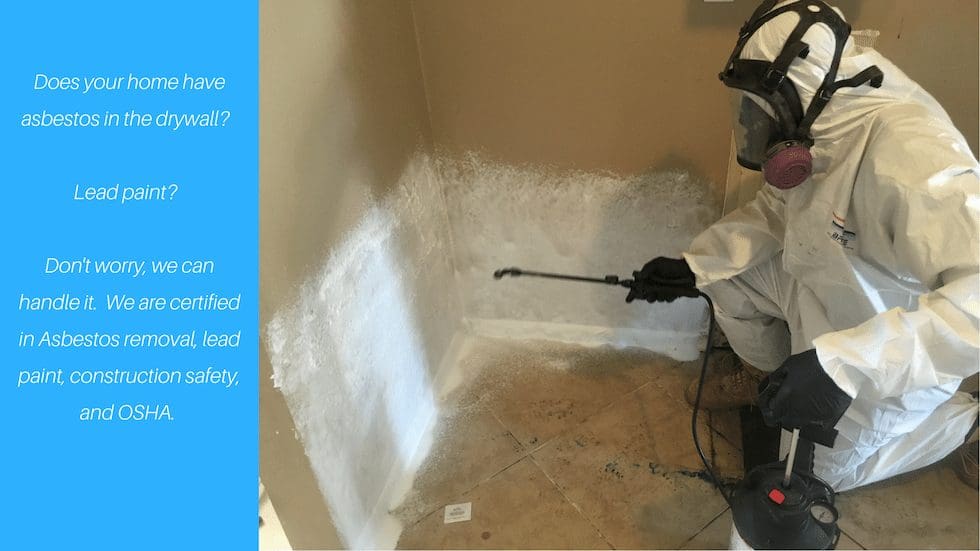
We Carry Insurance– To protect you and your home in the unlikely event of an accident
We don’t just tell you we are licensed and insured, we show you. With every estimate we provide, our license and insurance information is included. This will give you peace of mind knowing your property is in good hands.
Our Respect for Your Home- Which takes care of you and your property
Water damage cleanup is an intricate process. Demolition is usually involved along with tools and machinery. When working on your property, we set up containments to minimize dust generation, we use vacuum assisted power tools, tarps, floor protection, and ensure we don’t cross contaminate into others area of the home. Count on us to fix your problem and take care of your property.
Streamlined Insurance Process- To help you get your life and property back together, faster.
When working with your insurance company, it is important your contractor and adjuster work together to facilitate your claim. This will get your home restored much faster. We use the same software that 90% of insurance companies use. This means better service for you, and less time waiting around for us to provide the insurance with required information.
We can cleanup and rebuild your home– Making the process easier for you
Don’t worry about needing to call multiple contractors. We can fix your leak, cleanup any water damage, dry out the structure and building materials, and then rebuild your home. Since you are using one company to restore your property, you don’t need to juggle multiple contractors. This will save you time, money, and headaches.
Our Reputation with Insurance Adjusters– Provides you with peace of mind
As you may know, working with insurance adjusters can be arduous. Especially, if they don’t like your contractor of choice. When you choose us to work on your property, you will be delighted to know that we have very good relationships with many insurance adjusters. When your insurance company knows Plumber of Tucson is on the project, they are very happy to work with us.
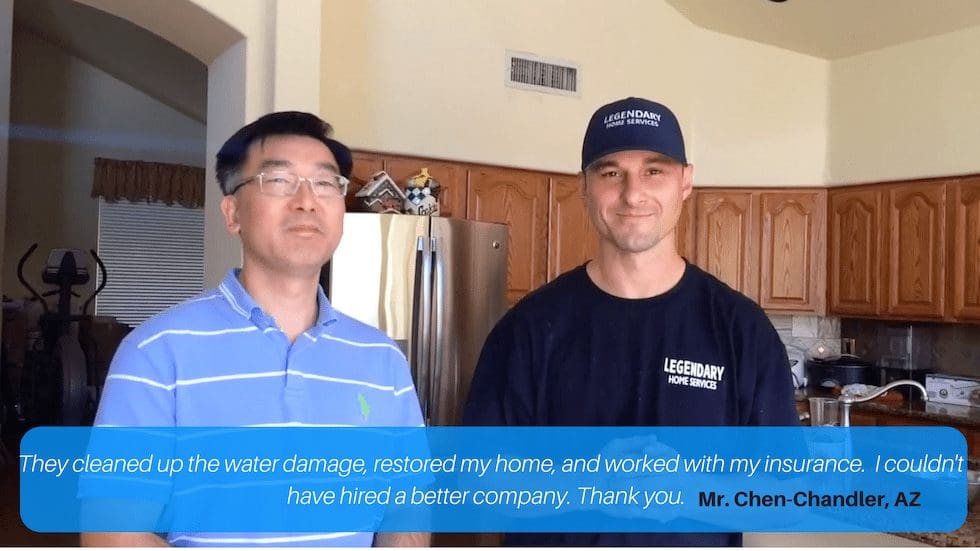
Do you have water damage in your home? Call 520-900-9010 today for expert Tucson water damage cleanup. We provide quick, affordable service everyday. When you call, just explain the situation and we will send someone over right away to get things under control.
Suffering through a situation where your home is damaged by water is bad enough, but the after the water has subsided, the real work begins. Sometimes, the level of cleanup required for a flooded basement or burst pipe is massive, and it takes a professional effort by experienced water damage experts to get your home back to its original state.
Common Causes of Water Damage
Water damage can happen for a variety of different reasons, some of them big and dramatic and others seemingly mild. You may encounter burst pipes, flooding due to heavy rains or a broken sump pump, overflowing washing machines or dishwashers, general plumbing leaks, sewer backups, cracks in the foundation, clogged toilets or a leaky roof. In many cases, water damage happens very quickly and you don’t have much time to react before it gets out of hand.
Different Categories of Water Damage
Water damage is graded into different categories to let professionals know how bad it is, and which restoration method is best. Category 1 water is clear and is usually from a source inside the house like a leaking tub or broken water line. Category 2 is also called gray water because it is wastewater from sinks and other appliances that hasn’t been in contact with human waste. Despite this, it can still be contaminated and pose health risks. Category 3 water is also called black water because it comes from sewage. Black water usually contains bacteria and organisms that are seriously bad for your health.
Choose Professional Service
When it is time to clean up the water damage, no matter what the cause happened to be, it is important to choose a professional service provider. Only an experienced professional has the experience and know-how to deal with bacteria, mold, pathogens and other elements that may have serious health effects. In the end, you want your home to be back to normal, and that is precisely what professional water damage cleanup is all about. One quick call is all it takes.
Don’t let water damage take over your home and cost you a fortune in repairs and renovations. Call Plumber of Tucson at 520-900-9010 in Tucson, AZ and the surrounding area for fast, reliable water damage cleanup you can trust. One of the best Restoration Companies in Tucson.[/vc_column_text][/vc_column][vc_column width=”1/6″][/vc_column][/vc_row][vc_row type=”vc_default” bg_type=”image” parallax_style=”vcpb-default” bg_image_new=”id^272|url^https://plumberoftucson.com/wp-content/uploads/2017/03/bg3.jpg|caption^null|alt^null|title^bg3|description^null” bg_image_repeat=”no-repeat” bg_override=”ex-full” css=”.vc_custom_1523033613925{padding-top: 30px !important;padding-bottom: 50px !important;}” el_class=”cta-section”][vc_column][ultimate_heading main_heading=”Need an estimate for Water Damage repair?
We can help – 520-900-9010″ heading_tag=”h3″ main_heading_color=”#ffffff” sub_heading_color=”#ffffff” main_heading_font_size=”desktop:32px;” sub_heading_font_size=”desktop:20px;” main_heading_margin=”margin-bottom:15px;” sub_heading_margin=”margin-bottom:40px;” main_heading_style=”font-weight:bold;”][/ultimate_heading][vc_row_inner][vc_column_inner width=”1/3″][/vc_column_inner][vc_column_inner width=”1/3″][vc_btn title=”Call Today: 520-900-9010″ style=”flat” color=”warning” size=”lg” align=”center” i_icon_fontawesome=”fa fa-volume-control-phone” button_block=”true” add_icon=”true” link=”url:tel%3A520-900-9010|||”][/vc_column_inner][vc_column_inner width=”1/3″][/vc_column_inner][/vc_row_inner][/vc_column][/vc_row][vc_row][vc_column width=”1/6″][/vc_column][vc_column width=”2/3″][vc_column_text]
Tucson Water Damage Reconstruction
Have you suffered serious water damage? Call 520-900-9010 today for fast and reliable Tucson water damage reconstruction service and honest pricing. Just explain what happened when you call and we will send someone to assess the situation and take control for you.
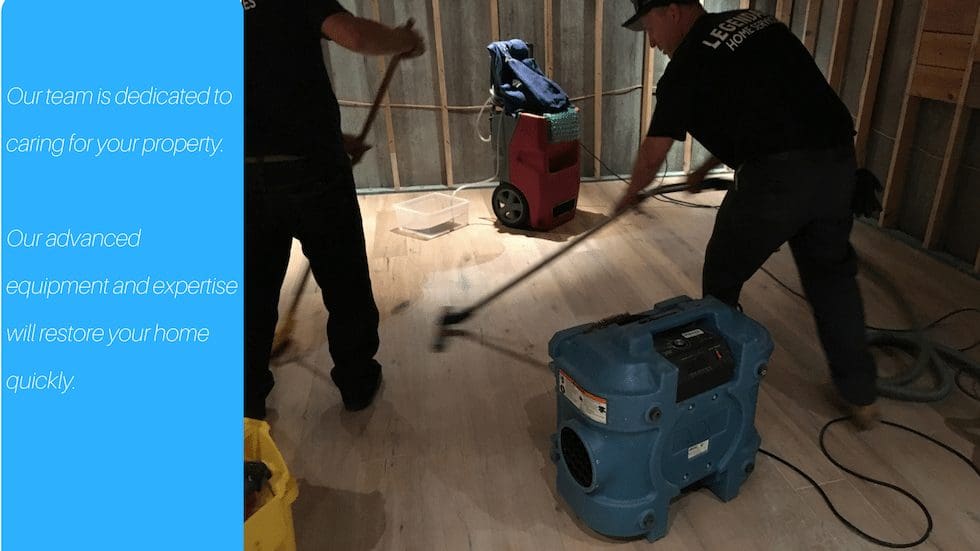
If you can say one thing about a flood or other invasive water event, it’s that they have the power to transform your home in a very negative way. Water is certainly soft and soothing and necessary for life, but it can also be incredibly damaging. Trying to get your home back to its pre-water damage condition is challenging, and is better left to professionals.
What Is Water Damage Reconstruction?
Water damage reconstruction or restoration, is a process by which a property is restored back to its pre-water damage condition, whether it sustained a lot of water damage or just a little water damage. Naturally, irreplaceable mementos and other items can’t be restored to their original form, but as much of the property as possible is reconstructed with this valuable service.
Water Damage From Many Sources
Water damage reconstruction is effective for any type of water damage, which is good because there are many different types to choose from. There are emergency plumbing issues like burst pipes and hoses, or flooding from the outside. There is also water damage from sources like overflowing washing machines, roof leaks, cracks in the foundation and toilet clogs. The potential for water damage is significant for just about every cause, which is why professional service is so essential.
Benefits of Professional Reconstruction
Professional water damage reconstruction provides many different benefits to the homeowner who is trying to make sense of what just happened. A trained water damage reconstruction technician will be able to remove the standing water from the home quickly and efficiently, minimizing the time it has to saturate the living space. It only takes mold about 48 hours to start growing, so speed is an important factor.
Another benefit of professional water damage reconstruction is removing health concerns from a homeowner’s mind. A trained technician can recognize health hazards in the water, and knows how to deal with bacteria, viruses, pathogens and other dangerous organisms. In the end, the overall losses will be less when you use a professional water damage reconstruction specialist. This includes the structural elements, as well as the health concerns.
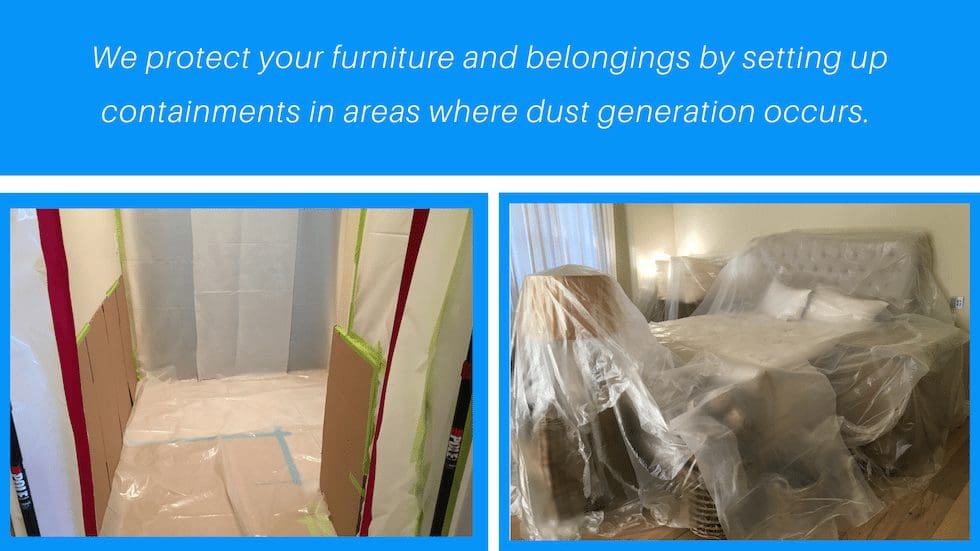 Don’t let water damage ruin your family’s home. Call Plumber of Tucson at 520-900-9010 in Tucson, AZ and the surrounding area immediately after the damage has occurred so we can get to work. Water Damage Repair Tucson.
Don’t let water damage ruin your family’s home. Call Plumber of Tucson at 520-900-9010 in Tucson, AZ and the surrounding area immediately after the damage has occurred so we can get to work. Water Damage Repair Tucson.
Tucson Reconstruction after Water Damage
Are you looking for expert Tucson reconstruction after water damage services? Call us at 520-900-9010 today for fast, reliable service you can trust. We will send a licensed technician to your home to provide you with the results you need.
You may need a reconstruction after water damage if there has been flooding in your home from a burst pipe or heavy rain, but most of the time a bathroom renovation is a matter of choice, designed to create a new look in the house. Whatever the reason, every reconstruction begins with the plumbing, and the plumbing has to be sound in order for the recon to be considered successful.
The Plumbing Aspect of Your Bathroom Recon
Behind the scenes of every great reconstruction after water damage is sound plumbing installation. Without the plumbing element, the recon falls flat because you’ll end up with serious water damage and the aesthetic aspect will be ruined. During a reconstruction, you may need the plumbing moved or adjusted, or in the case of a brand new bathroom, it will be installed from scratch. No matter how it happens, make sure you hire a qualified plumber, so your reconstruction efforts aren’t wasted.
Keeping Your Plumber In the Know
If you have a design team involved with your reconstruction, it is important to keep your plumbing team informed of your plans, including layout and other elements. When the design team and plumbing team are working in unison, the reconstruction can be carried out smoothly and every component will be handled by professionals who know exactly what they are doing. All it takes is one small part to be done incorrectly for the entire project to suffer, so make sure the plumbers aren’t left behind.
General Risks of DIY Reconstruction
With so many shows on television that depict homeowners carrying out their own home reconstruction, it’s easy to understand why so many people want to follow suit and take the DIY approach. If you are in this group, it is important to keep in mind that professional plumbers have the training and experience to perform your reconstruction without issues, without the need for corrections and within the building codes in your area. For a successful reconstruction after wate damage, that lasts, insist on using professionals.
A good reconstruction can add value to your home and leave you feeling refreshed and excited. Call Plumber of Tucson at 520-900-9010 in Tucson, AZ and the surrounding area for fast, reliable reconstruction after water damage and exceptional customer service.
Tucson Water Damage Drying Services
If you need professional Tucson water damage drying services, call us at 520-900-9010 today for fast and affordable service that will provide superior results. Water damage in your home gets worse the longer you leave it, so call today so we can get started.
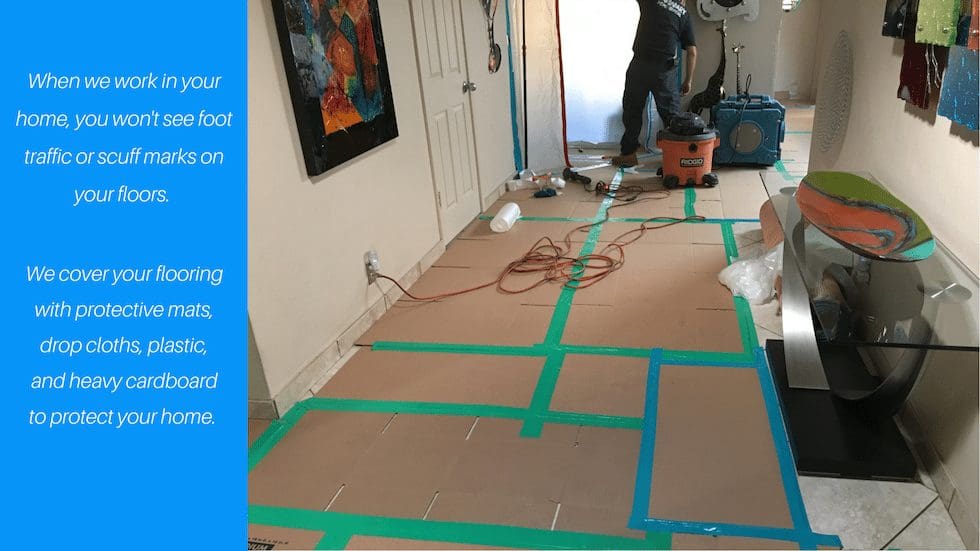
After your home has been flooded for any reason, one of the biggest jobs to take on is drying your floors, walls and possessions, so you can get back to your normal routine. Leaving the house to dry on its own will only result in mold and rotten wood and other materials with bacteria and other organisms thrown in for good measure. The key is to align yourself with a high quality plumber that specializes in water damage drying.
Does This Sound Like You?
Water damage has many different causes, and no one is better or worse than the other, because the result is always the same. Some water damage is more severe, but whatever the cause, your home is wet and professional drying services are required. Some of the common reasons your home may have water damage include normal leaking pipes, burst pipes, split hoses, appliance overflows, clogged toilets, water seeping into the house from behind walls or foundation cracks.
Professional Drying At Its Best
When water is leaking into your home, you may see damage on baseboards, wooden floors, carpets, walls, ceilings and other fixtures. The water damage drying process many begin with extracting any standing water, then using dehumidification equipment for floors, walls and other elements to help prevent mold growth. Throughout the process, technicians will keep a close eye on the moisture levels in the house, to ensure it is where it should be when they are finished.
Types of Water Damage
Wet is wet, but not all water damage is created equal. The most innocuous type of damage is called Category 1 water, or white water that comes from tubs or appliances that have overflowed. Category 2 water is known as gray water and this water is usually contaminated to some degree. If category 2 water is left for more than a few days, it can become category 3 water, which is also known as black water. The main source of black water is sewage and can also occur in a flood, washing all sorts of contaminants into your home.
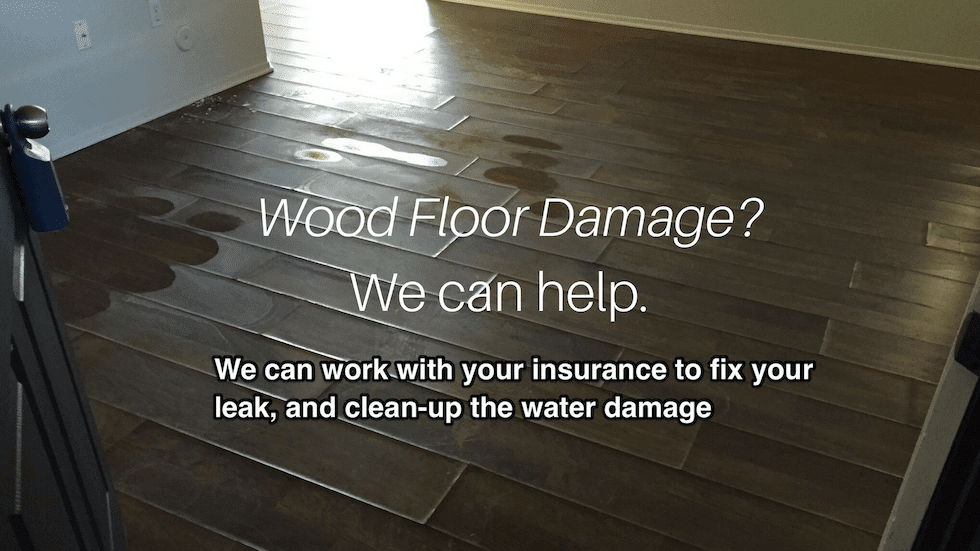
If your home has suffered some degree of water damage and you need the area dried and cleaned up in a hurry, call Plumber of Tucson at 520-900-9010 in Tucson, AZ and the surrounding area so we can provide you with an effective solution. Best in Tucson Water Damage Restoration.[/vc_column_text][/vc_column][vc_column width=”1/6″][/vc_column][/vc_row]
Toilet Installation and Replacement Tucson
If your toilet is leaking, running even without using it, or making noises in the middle of the night, we can fix it.
Plumber of Tucson is a full-service plumbing shop right in Tucson, ready and available for your plumbing needs.
Would you like to discuss your problem over the phone? We would love to speak to you. Give us a call now. We always answer.
What Happens When You Hire Us?
- First, we will set up an appointment that is convenient for you.
- A licensed plumber will arrive to evaluate your issue and diagnose the problem.
- Your plumber will calculate a price for the necessary repairs and present it to you in writing up front before any work starts.
- You approve the repairs before work commences.
- If you’d like us to come at another time, we can, or we can start work right then and there.
- We then get to repairing your toilet and will deliver the best service imaginable.
- We cleanup, write up your receipt, and then depart.
Toilet Installation and Replacement Tucson AZ
We provide warranties on all of our work. Everything we do is set in writing. You’ll get a copy of your receipt upon completion.
We are licensed, bonded, and insured for your protection.
We accept all forms of payments including credit cards.
Why do People Choose Plumber of Tucson for their toilet repairs?
Our Work Techniques: When your plumbing system fails, many people are unaware that in most cases the reason it failed was due to the previous installation, not the actual part or system. This is why it is important to choose the right plumber.
Our Expertise: we are not just good plumbers, we are master problem solvers. If you believe your situation is peculiar or difficult to repair, then we are the company for you.
We Always work with your best interests in mind: Your best interests are at the forefront of what we do. We don’t work to make things easier for us. We will always do what is right for you and your property.
Our Qualifications: Wouldn’t it be nice to have a plumber on site who also knows your home and construction of the area? That’s exactly who we are. We are licensed in plumbing and building construction so we know and understand the construction of your home more than many other plumbers will.
Our Regard for Your Property: don’t you hate it when I worker comes to your home and doesn’t wear shoe covers on your flooring? At one Earth to Shawn we have the upmost regard for your home. We will lay out drop cloths, tool mats, and protective flooring. We are not going to scatter about our equipment on your floor and risk doing damage.


